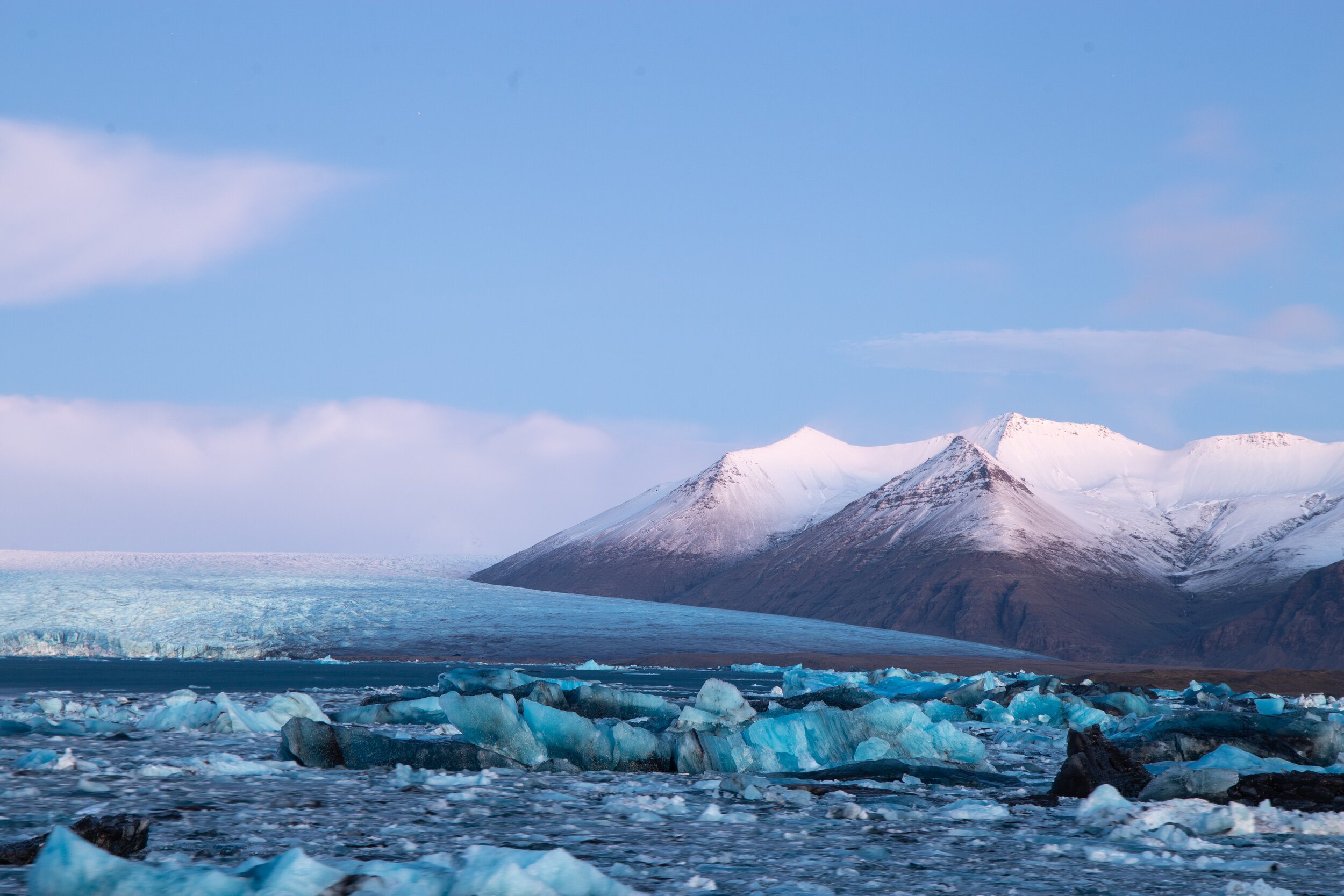Geysir and Strokkur
Geysir
Everyone has heard of geysers - hot springs erupting under pressure, releasing steam and jets of water into the air. Iceland is one of few places on Earth where you can witness this rare phenomenon, and it’s where you will find the geyser that lent its name to all other geysers around the world. Geysir is the OG.
Geysir is the geyser that was first documented in print, and its name comes from the Old Norse word geysa meaning gush. This eventually led to all such geological features being referred to as geysers in later centuries. Today, Geysir and the Old Faithful in Yellowstone National Park, are probably the most famous geysers out there, but you can also find them in New Zealand, Russia, and Chile.
Strokkur
And yet, it’s not actually Geysir that you see in all the photos. While it is the most powerful one, it very rarely erupts, and is currently going through a phase of inactivity. The last eruption was in 2016, though it is only a matter of time before it happens again.
Just 100m from Geysir lies a more exciting geyser - Strokkur. This one is very much active and erupts every five to ten minutes. Therefore you are guaranteed to see this happening several times during your visit. It spouts up to 20m, sometimes more (while Geyser can go over 100m). Strokkur has not always been active though. Its conduit became blocked in the early 20th century, following an earthquake. In 1963, the geyser was successfully unblocked through human intervention, and it has been erupting often and regularly ever since. Geysir has also been forced into erupting in the past, through digging and by using soap to stimulate the eruption, though this hasn’t resulted in a sustained activity.
Because Geysir is the big (albeit inactive) one with the iconic name, and is used to refer to the geothermal complex as a whole, visitors often mistaken Strokkur, which is seldom mentioned, for Geysir.
Over time, both geysers have passed through long periods of activity and inactivity, turning on or off over the years, as a result of powerful earthquakes or through human aid. The reason behind this, and what makes geysers so unique and rare, is that very specific geological conditions need to be met simultaneously in order for these phenomena to occur - to do with the location, rock structure, water flow, etc. Sometimes the geysers would awaken with frequent eruptions, which would then very slowly die out, until the geyser becomes dormant again. Other times, this would be sustained, as is the case with Strokkur today.
The Geothermal Area
Geysir and Strokkur are part of a larger geothermal area in the Haukadalur Valley in SW Iceland, with several geysers and hot springs - notably Blesi, for its vibrant turquoise water. This geothermal complex is one of the most visited landmarks in Iceland, and one of the three main stops on the popular Golden Circle route (along with Þingvellir and Gullfoss). This place is found 100km away from Reykjavik and is extremely accessible, as it’s just off the main road, with free entrance 24/7, free parking, and plenty of facilities nearby. Free toilets are available at the Geysir Centre.
As is the case with all geothermal areas, you will be greeted by a strong rotten egg smell due to the sulfur in the ground. There is a clearly marked yet discrete trail that will take you around the site. Obviously, these are not the kind of hot springs that you could bathe in, but, needless to say, don’t try to test the boiling water with your fingers. The roped fences and information plaques are there for a reason.
If you visit Geysir and Strokkur, don’t miss the Gulfoss waterfall nearby. It’s just 10km away, so it makes sense to combine those two together. Read more about it here.







Probably the most beautiful waterfall in Iceland